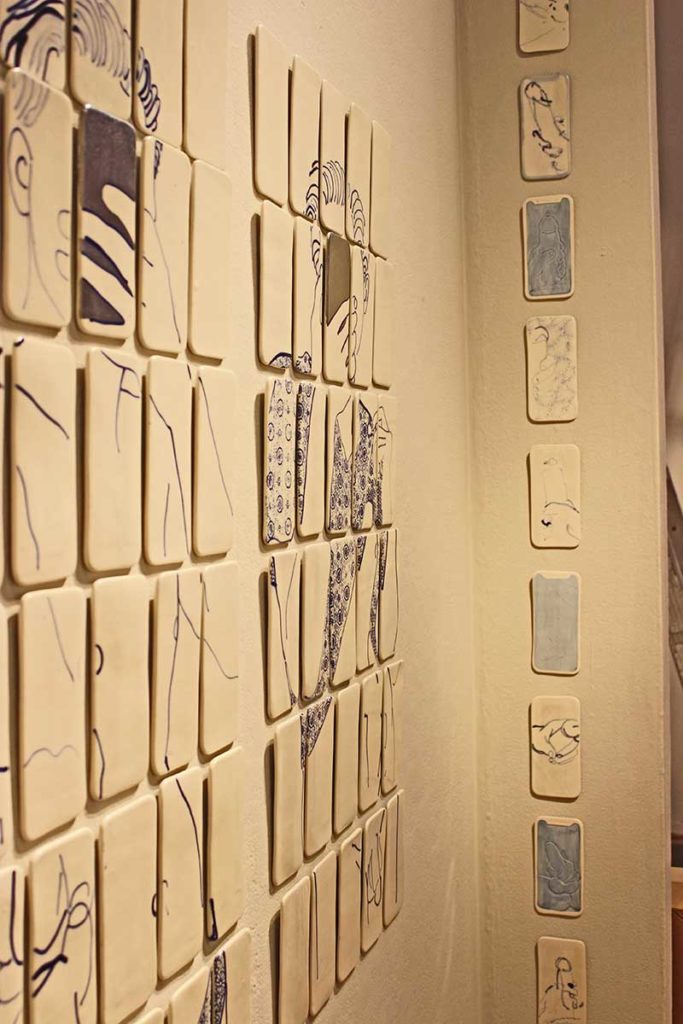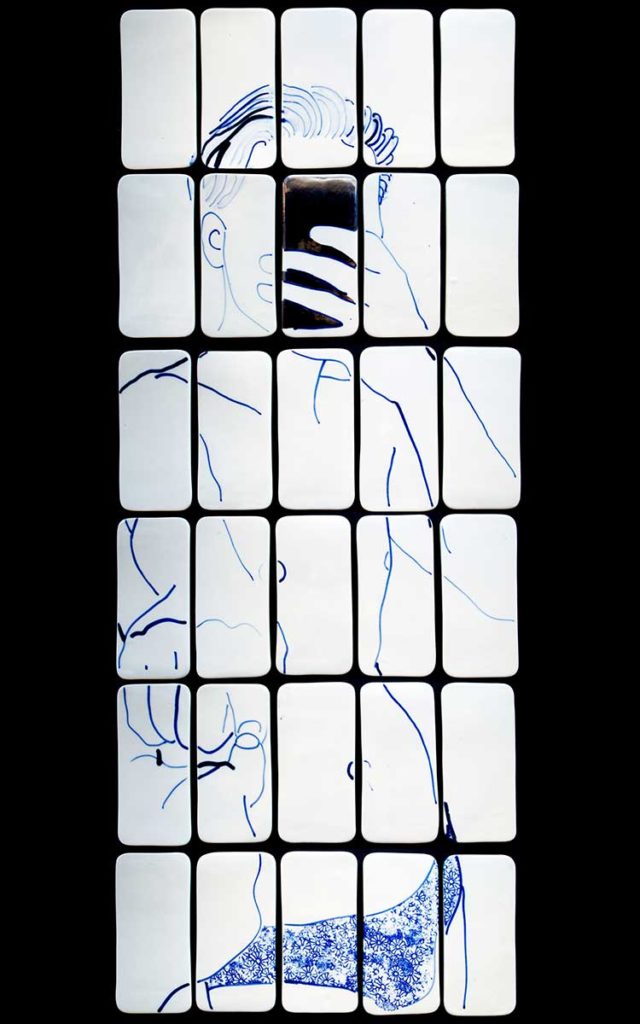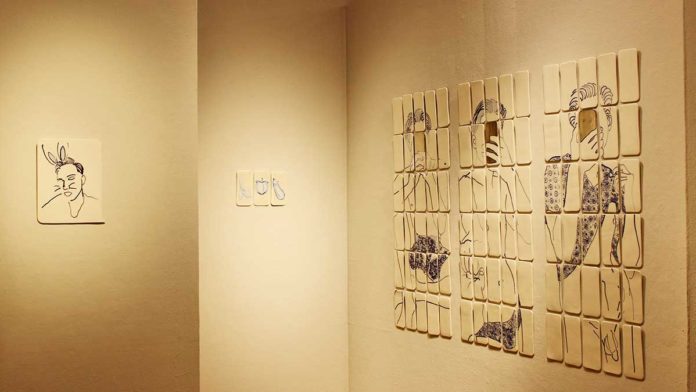“It all started with sexy boys.” So begins the artist’s statement for SENT, a new exhibit at The Clay Studio created by out fine artist Adam Chau. The project considers queer aesthetics and connection within digital spaces — which took on a level of irony when the exhibit’s opening was moved online due to the COVID-19 pandemic. (The Clay Studio plans to reopen in Old City on July 6 under strict social distancing guidelines.) Chau, a sculptor and ceramist based in New York, used materials culled from smartphone batteries to create the images seen in the series.
PGN spoke with Chau about his inspiration, the effect of social media on the queer community and connecting with LGBTQ+ youth through art.

Can you talk a little about how this project came about?
I wouldn’t say I was inspired so much as alerted to what was happening on social media. About a year and a half ago, Instagram changed its algorithm from where you would normally see a chronological feed to what they thought would be most popular. They did that for advertisers to get into feeds more easily, and in a way that wouldn’t necessarily look like spam. What I noticed was that I was starting to see sponsored feeds of really gorgeous men: perfect, chiseled, shirtless men. The frequency started to go up, and I really started not to like how the content I opted into was being drowned out by all this sponsored content. I wanted to investigate this further, because my work already deals with digital culture, technology and manufacturing. When I started looking more closely, I noticed something weird: When someone tried to take a selfie, it was a mirror selfie more often than not, which was sort of obliterating their identity. I thought how weird is it that you’re trying to take a selfie, but you’re actually becoming anonymous? What does it mean to take a self-portrait that’s not really a self-portrait?
How did you decide what materials to use?
I started cataloging all of the people coming into my feed; and of course, when you start saving or interacting with something, the algorithm thinks you like that content, so they start showing you more of it. What was showing up for me was male-identifying bodies, usually queer, and it kind of snowballed from there. I also looked into Grindr and Scruff culture, and I found there’s a subculture of people who don’t care about dating or meeting up. The only thing they want to do is trade pictures. I found this particular digital subculture really interesting, because I would imagine that ten years ago the idea of what connection is would be different.
How much of the show is a reflection on this kind of digital culture that has cropped up within the gay community?
There is a spectrum of how people use digital culture, which is why the show is called SENT. You are supposed to reflect what you yourself are comfortable sending to someone else. Like, I would never send a dick pic to my husband. But it happens, and I wanted to go to the extreme to talk about what someone viewing the show would be comfortable sending. On a personal note, though, I had a 5-year long-distance relationship with my husband before we were married, and without the internet, I wouldn’t have a relationship.

What has it been like to adapt your show to a space that is partially digital due to COVID-19?
I don’t know if I should feel lucky, but we’re living in very interesting times right now, and I’m happy to be part of the conversation that is talking about digital culture versus reality. The reality is, I’m a ceramic artist who uses digital culture as content. I did have to go down physically and install the show, which has been a wonderful parallel between the work and what is actually happening. It’s a bit academic, but screen-based technology is two-dimensional. When you look at your phone, you’re looking at a screen. But the smartphone itself is actually in three dimensions. So the smartphone is two-dimensional, three-dimensional and a ceramic tile all at the same time. I see the connection between technological objects and tile.
Can you talk a bit about the youth programming you’re engaging in locally during this exhibit?
The Clay Studio hooked up with The Attic [LGBTQ Youth Center] to do a digital workshop. I have created 50 blank tiles for queer youth, which the Claymobile will be hand-delivering. The ceramic kit will include a blank tile, underglaze and some brushes. With this kit, they can log online and have a Zoom class — or follow along with a physical sheet if they can’t tune in — and I will be guiding them through a clay class. With this tile, they are supposed to explore how they want to represent themselves online. The class is called “Love Your Self(ie),” and that will be in July. And the Clay Studio will fire their tiles and get them back to the students.
This interview has been condensed and edited for clarity.
Adam Chau’s SENT runs through Aug. 2 at The Clay Studio in Old City. The exhibit can be viewed online at theclaystudio.org and in person beginning July 6.
